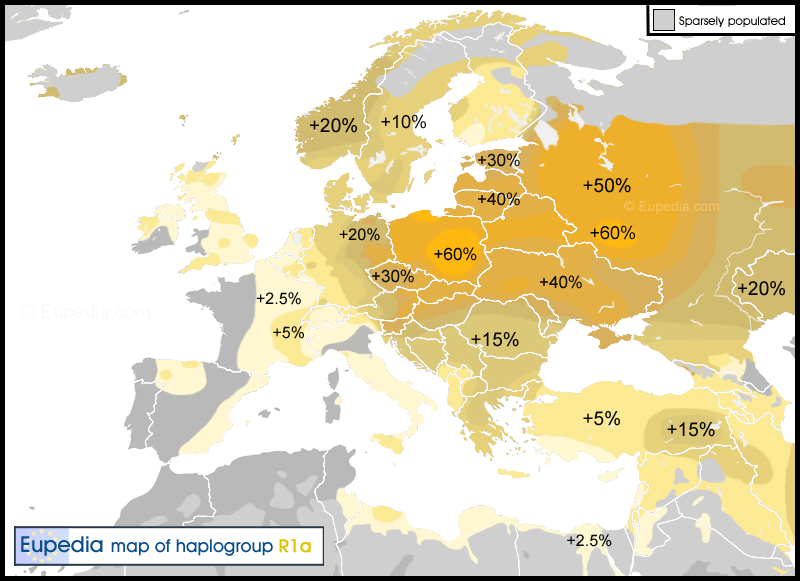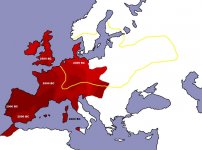As you know I am proponent of idea that tribal names, as primary identity carriers of tribal people, do sometimes over-live language shifts and cultural changes..
if we look at R1a map in Iberia there are actually 2 hotspots of R1a...its wider area of Cantabria with one hotspot in the east inner land area and one on the west coastal area...and some lower level spread between the two that could as well be about long times of genetic spread from the two hotspots... so its not necesserily Cantabria where R1a people settled at some time in the past but its east and northwest corners...
northwest corner hotspot is on sea coast and thus may even be due to Vikings...
east corner is more interesting as it is not so near sea coast...
in ancient Iberia we find there tribes of following names:
Seurri, Lougei and Lemavi
to me this looks like a little colony of tribes later considered as east Germanic
Scirri, Lugii and Lemovii
which all lived in neighboring areas south of Baltic where R1a is significant
if we assume an ancient times colonization of Iberia (and I have elsewhere pointed out similar possible collonies of tribes such as Seurbi, Helleni and Caladuni close to this areas, and also myth of origin of Scotish people describing movement from Scythia to Iberia and than to UK which can be traced in tribal names Chelidoni north of ancient Greece, Caladuni in Iberia and Caledones in Scotland)
its impossible to tell when such a collonization took place and thus whether those tribes were Germanic or pre-Germanic, but i think it is very possible that there is a genetic-tribal name link that can be established by further investigation of actual subclades present...
http://upload.wikimedia.org/wikipedia/commons/b/b5/Iberia_300BC.svg
its not impossible that east germanic tribes had a colony there in ancient history prior to Roman empire expanding and cutting their link from the colonies...
a memory of that would explain why many east germanic tribes (Suebi, Vandali, Goths) have, when faced with difficult survival battles in east Europe, massively migrated to south and in particular to Iberia.. nations do not just move to random directions passing very long distances...they move where they expect better, more easy life... and they are likely to do that based on some pre-knowledge or even prehistory of living there...
edit: checking at
http://r1a.org/3.htm for types of R1a samples found in the Cantabria
not many r1a samples there but from what I can see:
1 northern-eurasian
1 eastern carpathian
1 Baltic-Carpathian
1 Old Scandinavian
1 old European
i would say it is all pinpointing to Baltic area as place of origin...





